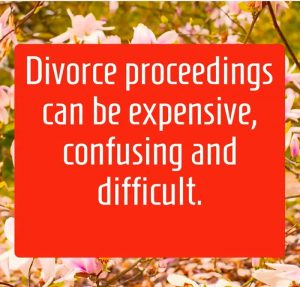Fintech startups looking to get traction, gain awareness, and grow sales should consider launching a fintech blog. We’ve discussed the importance of fintech stories, though the concept of having a brand narrative can mean many things. “Telling a story” can be a sales presentation, the front page of your website, or any content that your brand produces.
One effective way to use storytelling as an effective marketing tool is by blogging. An active, well-curated blog shows that your brand has a finger on the pulse of your industry. We walk through the step-by-step process to get your fintech blog launched and successfully running for the long haul.
Step 1: Set the Foundation
First, you need to decide where your blog will live. Some FinTechs already have a resource center on their website, where users can download tools, calculators, and other educational information. It often makes sense to include your blog as part of this content hub. In other cases, you may just want to link to your blog in the top navigation as a standalone resource.
You’ll also need to determine what topics you will cover and on which channels you will distribute the blog content–as well as how often you will publish. Setting up a content calendar is a great way to get organized when considering these elements. A good rule of thumb is to plan out 3 to 6 months of topics. You may consider organizing topics into monthly themes and you may want to account for seasonality, upcoming industry events, or your own company news. Using a content calendar can help you visualize your strategy.
A content calendar also helps you establish cadence. Will you publish twice monthly? Four times monthly? These are important considerations. Use your documented goals and your overall strategy to help you determine which publishing frequency makes sense.
Consider how SEO plays into your content marketing strategy. Each of your posts should have a focus keyword, which you can call out in the content calendar to alert writers. Consider using plugins like Yoast or All in One SEO (if you’re using WordPress) to help optimize content before publishing.
Step 2: Fill Out Your Content Calendar
Once you’ve created a content calendar as a framework for your fintech blog, you can start filling in the blanks. If you haven’t already come up with topics, start filling those in. Consider referencing editorial calendars of industry publications as fodder for your own calendar. Some to consider/download:
Think about the different audiences for which you will be producing blog posts. If you don’t have them already, build out some audience personas to help you tailor your content for the correct audience.
Step 3: Decide On Content Formats
Content creation encompasses an array of media and formats. While many blogs are primarily written content, also think about creating infographics, short videos, and social content to help promote blog posts. Different audiences prefer to consume different types of content, so mixing things up can ensure that you capture the attention of the right people:
- Blog post – Written content, typically conversational in tone & voice, that allows you or your company to provide insights on relevant topics. Could be a listicle, “how-to” or other short-form, written content.
- Thought leadership article – Written content, typically more formal than a blog post, that may cover a topic relevant to your company’s products/services in a general, non-salesy way. Typically goes deeper than a short-form blog post, whether in length or in detail.
- Videos – Product videos can discuss specific product details. Topical videos educate and inform viewers on a topic or trend. Animated videos can combine education and entertainment or be tied to a specific campaign. You can even produce fairly casual videos that simply allow viewers to get to know you and/or your brand on a more personal, interactive level.
- Infographics – Infographics are visual presentations of data or other information. Infographics can be used as standalone pieces or to highlight key takeaways from another piece of content. These are ideal for sharing across social media.
- Podcasts – Audio content that users can download to their computer or a portable media player. Podcasts are often created as a series and many businesses ask users to subscribe and receive the newest podcasts delivered directly.
The type of content you want to produce and share on your fintech blog is entirely up to you, but some testing across different formats is typically a good thing. See what resonates with your audience and use that to inform your strategy moving forward.
Step 4: Execute On Your Plan
Content creation is tough; there’s no way around it. Launching and maintaining a fintech blog requires resources to write and minds to offer insights on relevant topics, information, and details. Skimping on quality isn’t an option, either. Your audience will know it and distrust you as a resource. Fortunately, there are ways to streamline content creation that can save time and lessen the burden on internal resources who have other core focus areas.
In researching topics to fill your content calendar, don’t forget to reference some often-overlooked areas:
- Go through your inbox to see the most frequently asked questions by your audience
- Refer to a recent customer survey for insights on what topics are important
- Look to your social networks to see which topics are trending
- Consider which pieces of already-created content could use a refresh or an overhaul
When it comes to content creation, don’t shy away from leveraging tools that can save time:
- Google Docs – Share documents with coworkers using Google Docs and simplify the editing process while eliminating burdensome email chains. You can write, edit, track changes, and collaborate on content with other users from their organization.
- Hemingway App – Make your content more readable and clear with this tool that helps you catch grammar and spelling mistakes while simplifying your writing.
- Canva – This tool helps you create infographics and edit images online using their stock photography or your own photos. It’s especially helpful when creating social media posts that you may use to promote your blog in a visual way.
- Adobe Creative Cloud – Tap into Adobe’s suite of services and tools for creative professionals to make creative assets that can be organized across multiple devices.
- Optimizely – You may want to consider this tool if you plan to use your blog as another place to convert visitors. It’s an experimentation platform that allows you to test different digital elements, including design and algorithms. The tool tracks and analyzes experiments across digital channels, helping users improve conversion opportunities quickly.
Step 5: Measure and Improve
The first four steps should get you to a good place to launch your fintech blog, but it is not a “set-it-and-forget-it” endeavor. Great content should increase traffic and improve SEO, but both are fluid and need to be optimized on an ongoing basis.
Be sure you have Google Analytics installed on your blog and that you are tracking and analyzing how different posts perform. Look at which topics, media formats, and content types resonate with your audience. Continue to test and pivot your strategy according to the results.
Don’t just look at raw traffic, but consider how much of it is coming directly, from organic, from social, and from other sources. Tweak your distribution strategy to meet your specific goals. Review which posts are getting the most page views and consider writing spin-off pieces on popular topics. Keep a pulse on the preferences of your audience and continue to produce content that meets their needs. This is how you can use your fintech blog to build trust, credibility, traffic, and ultimately, prospects that are ready to convert.
This post originally appeared on the Content Rewired blog.
Digital & Social Articles on Business 2 Community
(32)
Report Post






